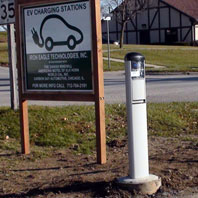Senator Tom Harkin (D-IA) and a group of bipartisan senators met with EPA Administrator Lisa Jackson and Department of Energy (DOE) Deputy Secretary Daniel Poneman this week to discuss delays in the approval of E15 ethanol blend for vehicles, as well as other key issues related to the ethanol industry.
 Harkin says they talked with the officials about the importance of moving to E15, the need to mandate the manufacturing of flexible fuel vehicles and the installation of pumps that provide for high ethanol fuels and loan guarantees for biofuel pipelines. “We all agree that we must reduce our dependence on foreign oil, and that this will require a multi-pronged strategy, including more efficient use of transportation fuels and expanded use of alternatives to petroleum-based fuels,” Harkin said in a statement. “We also recognized that biofuels have already significantly displaced petroleum based fuels in the transportation fuels markets, reducing our reliance on oil imported from overseas. And we all agreed that biofuels have the potential to make much larger contributions.”
Harkin says they talked with the officials about the importance of moving to E15, the need to mandate the manufacturing of flexible fuel vehicles and the installation of pumps that provide for high ethanol fuels and loan guarantees for biofuel pipelines. “We all agree that we must reduce our dependence on foreign oil, and that this will require a multi-pronged strategy, including more efficient use of transportation fuels and expanded use of alternatives to petroleum-based fuels,” Harkin said in a statement. “We also recognized that biofuels have already significantly displaced petroleum based fuels in the transportation fuels markets, reducing our reliance on oil imported from overseas. And we all agreed that biofuels have the potential to make much larger contributions.”
Harkin says he was pleased to hear in today’s meeting that DOE is also evaluating E20 in its battery of vehicle tests. “This may well provide the basis for EPA approval of E20 as well as E15 for use in all gasoline-fueled vehicles early next year,” he said. However, Harkin noted that he remains frustrated that testing is not yet complete on E15 and that the deadline has been extended twice. “This process seems so much more difficult that it was when E10 was approved. While I had hoped that E15 would be available by now to consumers, Secretary Jackson and Deputy Secretary Poneman were very helpful in fully explaining the rationale for the protracted timeline, and I am looking forward to hearing EPA’s decision on E15 soon,” said Harkin.


 The cane crush in Brazil so far this year is running about 20 percent ahead of last year, which is not necessarily good news according to the
The cane crush in Brazil so far this year is running about 20 percent ahead of last year, which is not necessarily good news according to the  Meanwhile, here in the U.S., ethanol production was up 14,000 barrels per day in May, according to the
Meanwhile, here in the U.S., ethanol production was up 14,000 barrels per day in May, according to the 





 The
The  A
A